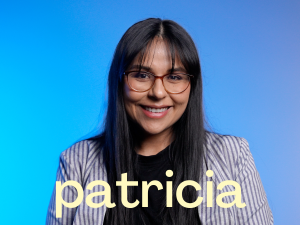‟ The first time I wrote a line of code was amazing – very simple, but it felt like an explosion in my mind. I knew then I wanted to do this for life.”
Meet Patricia Becerra, who went from writing her first line of code as a kid in Mexico to revolutionising how machines understand human language. Now at SnT, she’s on a mission to eliminate the crazy reality that thousands of legal documents are still verified manually. Discover how her multicultural journey led to AI breakthroughs transforming entire industries.
Relive the conversation—transcript below!
What is your background and what brought you to Luxembourg?
I have a PhD in computer science from the Polytechnic University of Catalonia in Spain, plus a bachelor’s and master’s degree from Mexico. I’ve been at SnT for four years, and it’s been a tremendous career opportunity. The first word that comes to mind about my research is “learning” – I’m teaching machines to understand human work.
What does your research environment look like?
I work with multiple computers and screens simultaneously. I have lots of keyboards and mice, constantly switching between screens. I’m doing several things in parallel, turning from one screen to another. It’s crazy.
What unexpected skills did you have to learn during your research?
Two things surprised me: neuroscience and VAT legislation. When I started my PhD, I was purely in IT and AI, but I realised I needed to understand how brains work. Even more surprising was learning about VAT legislation – I chose IT exactly to avoid these areas! But combining them with IT turned out to be amazing.
What are you currently working on?
I’m working on an AI project that helps accountants verify legal documents and ensure VAT compliance. I collaborate with a company called Logos IT, and Spuerkeess bank to implement research in real environments.
‟ It’s crazy that in 2025, people are still manually verifying thousands of documents! We’re developing AI and large language models to automate this, so people can focus on more important tasks.”
What sparked your passion for technology?
When my parents gave me my first computer, I was so excited. The first time I wrote a line of code was amazing – very simple, but it felt like an explosion in my mind. I knew then I wanted to do this for life.”
How would your teenage self react to seeing you now?
She’d be very proud! Since childhood, I’ve been interested in AI, IT, technology, and how machines work. Deep down, I always knew this was the direction I wanted to take. I’m doing what I was dreaming about as a kid.
What misconception about researchers makes you laugh?
People think we’re very serious with no sense of humour, always wearing white lab coats in sterilised labs. The truth is, we work in regular offices with lots of screens. We’re pretty fun and creative! We love talking to people and always have interesting facts to share. Plus, we develop the superpower of explaining complex things simply.
What was it like being a woman in IT, and who inspired you?
At university, I felt like I couldn’t fit in – I was one woman among 50 men in jeans and superhero t-shirts, while I wore dresses. But I had two brilliant female professor role models – two sisters who taught maths and programming. I knew that one day, I wanted to be like them. My family also supported my ambition to work with machines and software.
How has diversity shaped your experience?
When I started in Mexico, I didn’t see much diversity. During my PhD in Spain, I realised people from around the world were doing the same work regardless of nationality.
‟ Now at SnT in Luxembourg, surrounded by diverse people and languages, I’ve realised we’re all working toward the same goals no matter where we’re from.”
Supported by the Luxembourg National Research Fund
